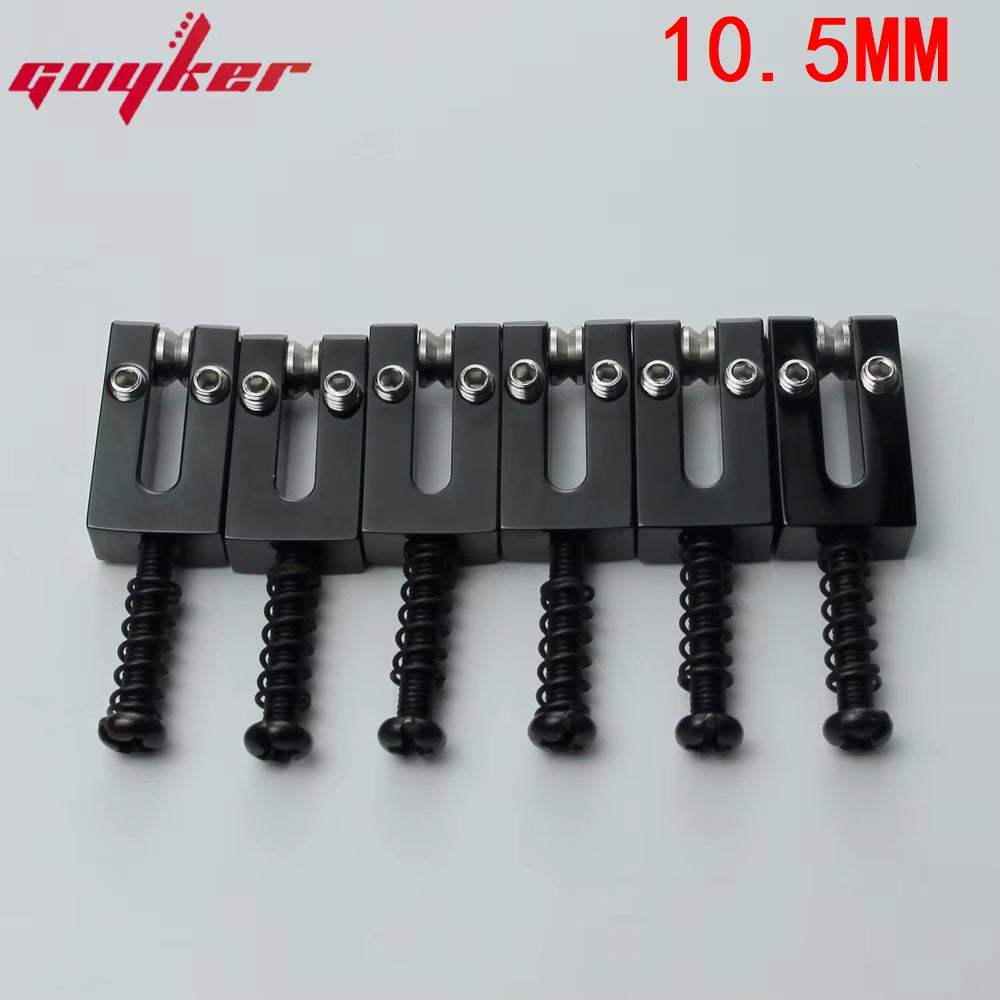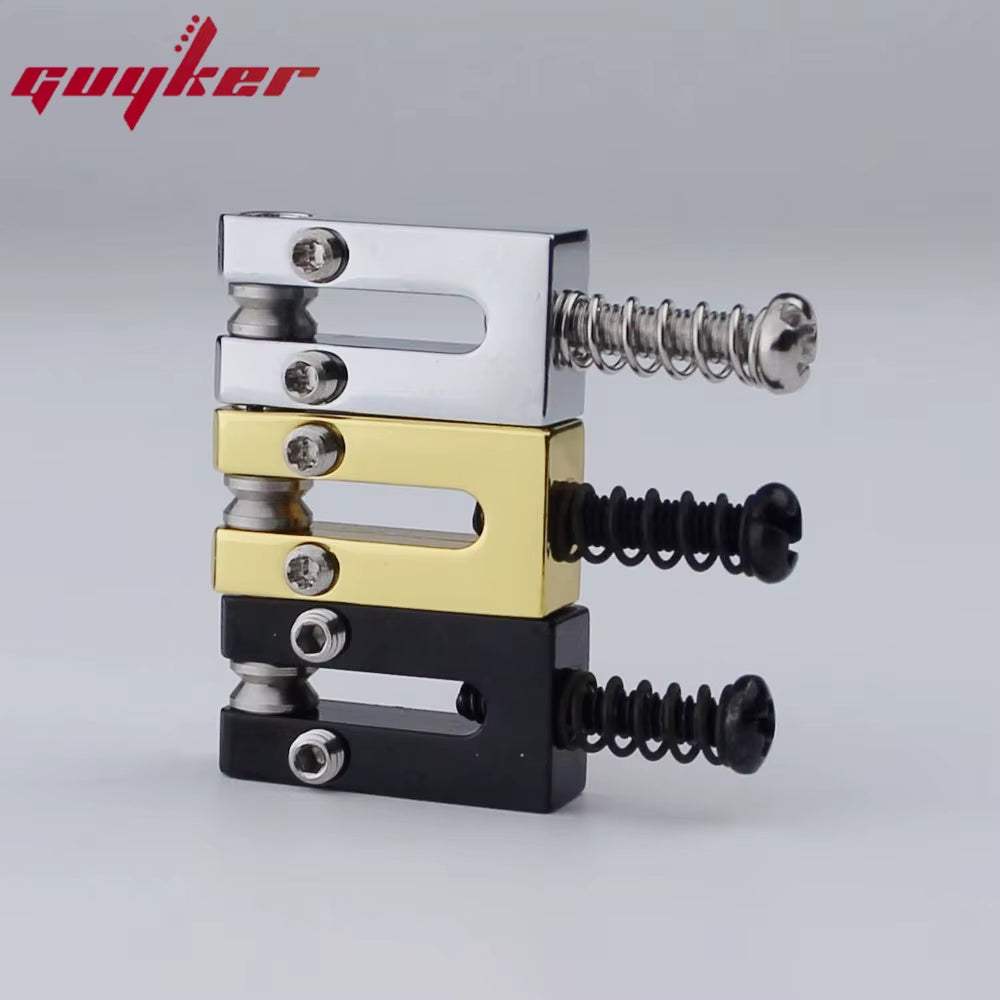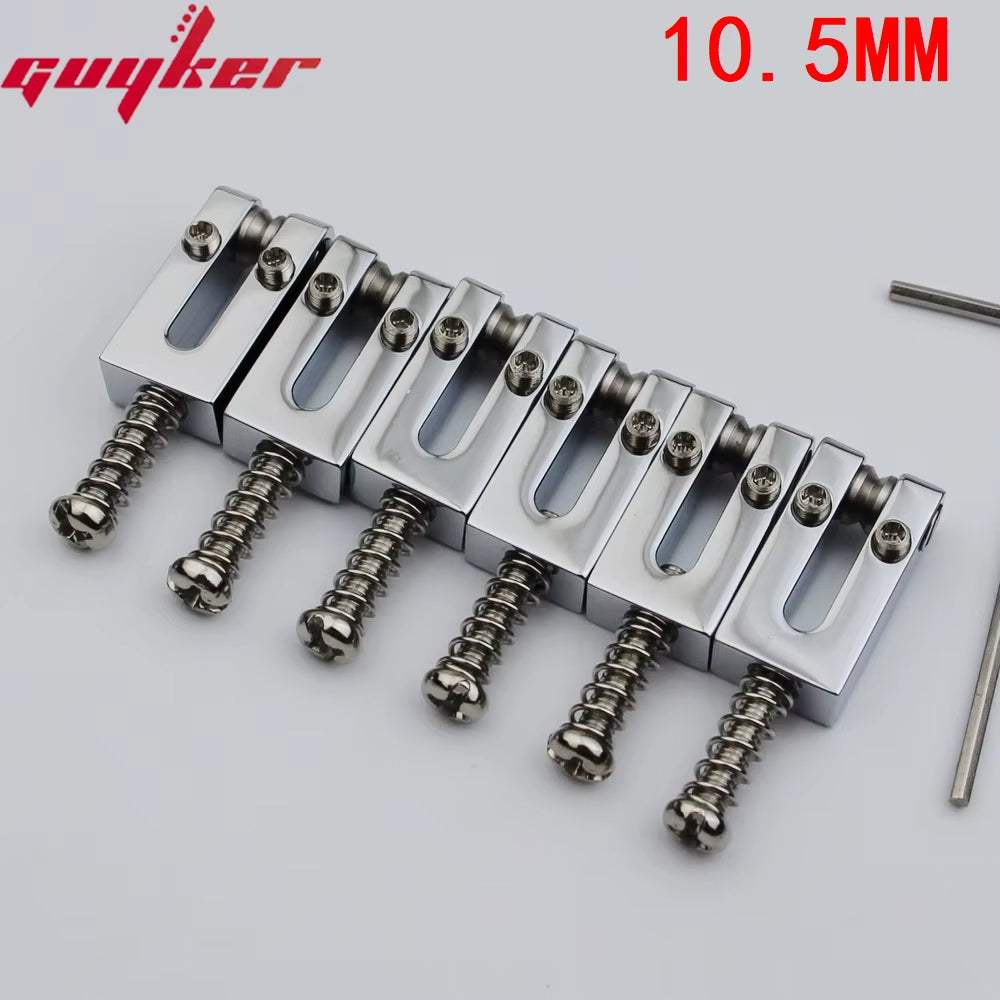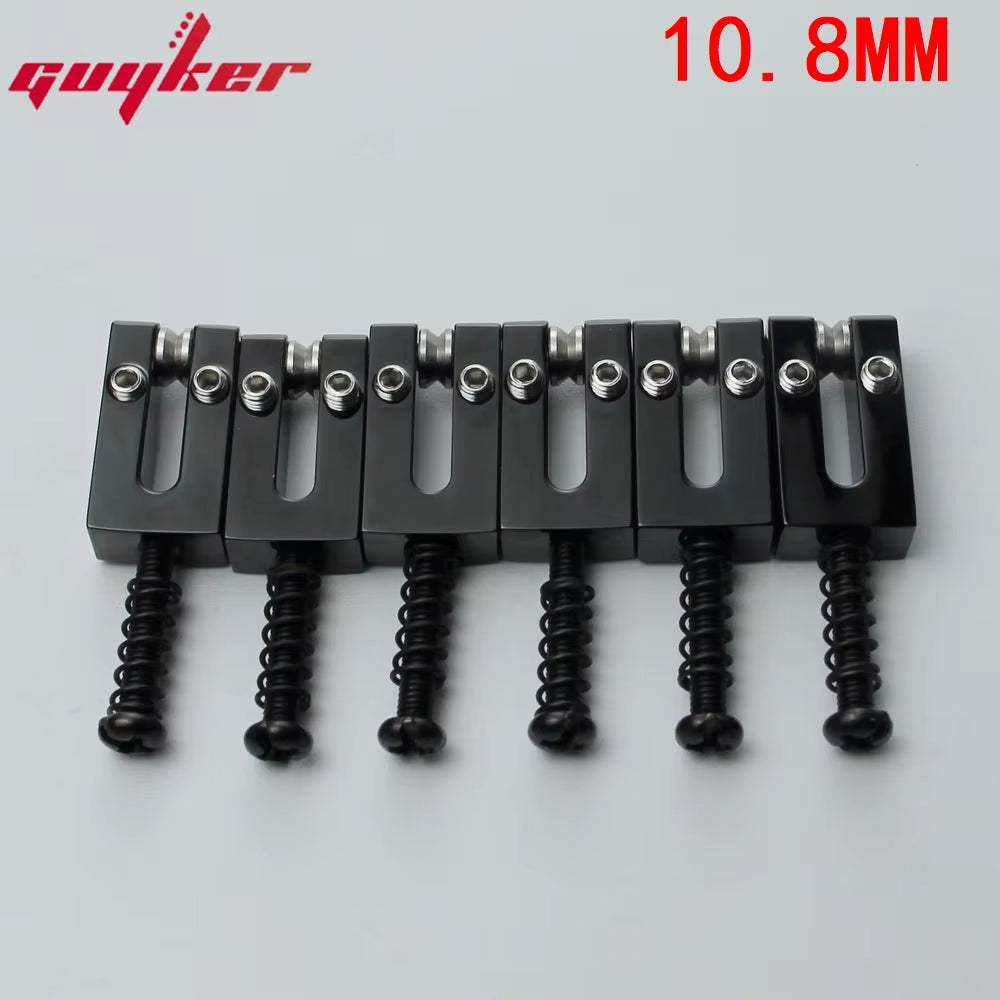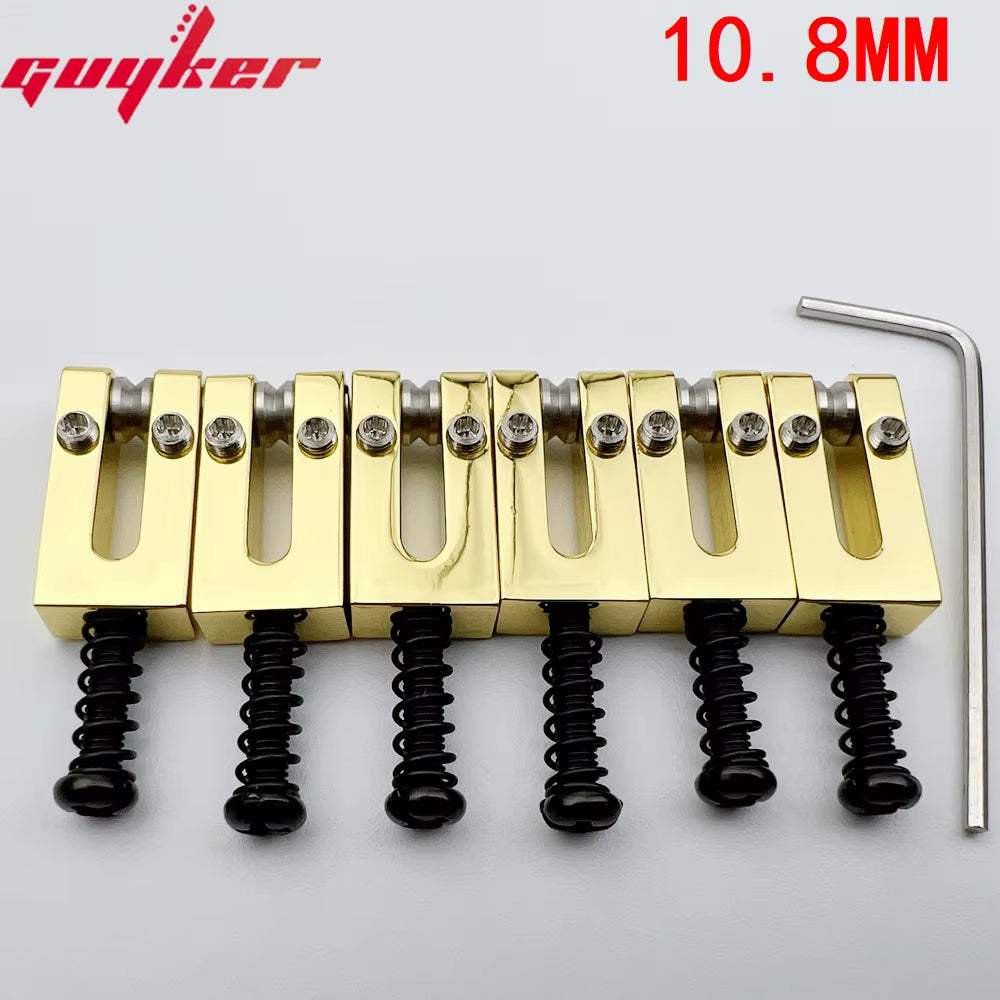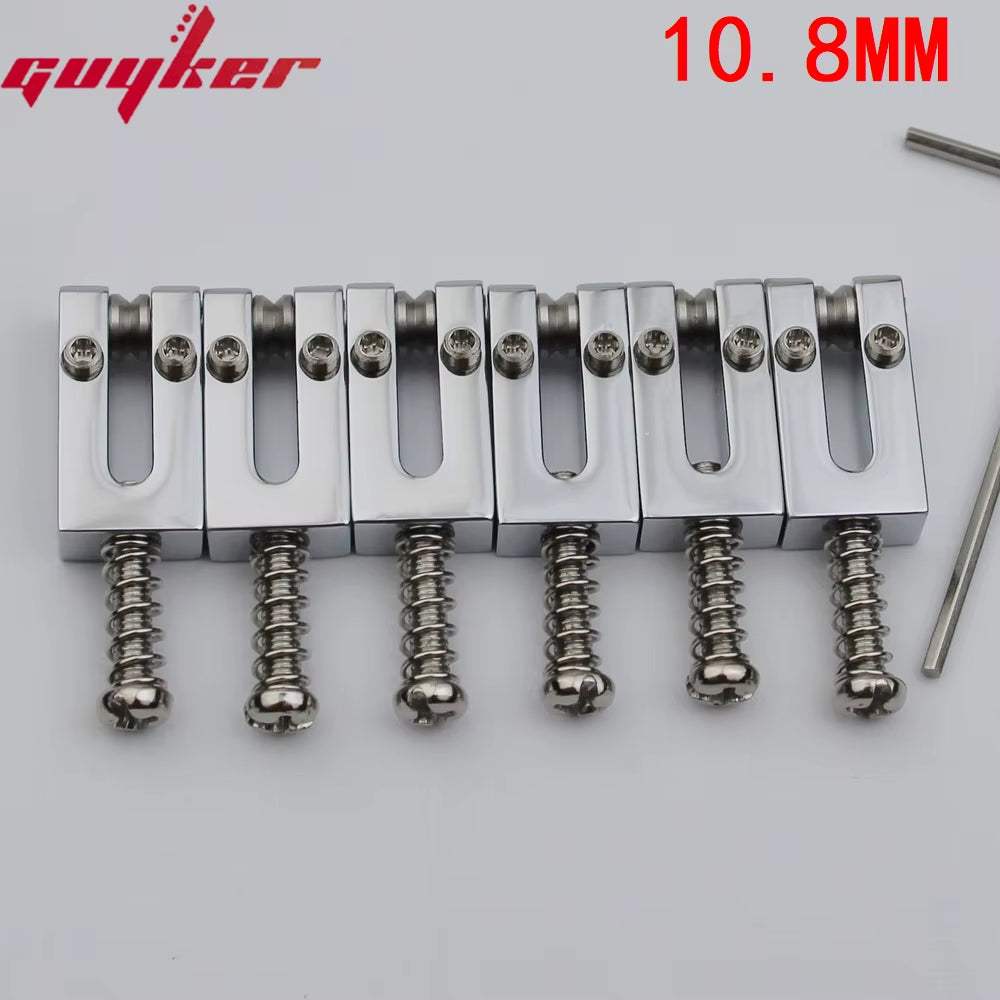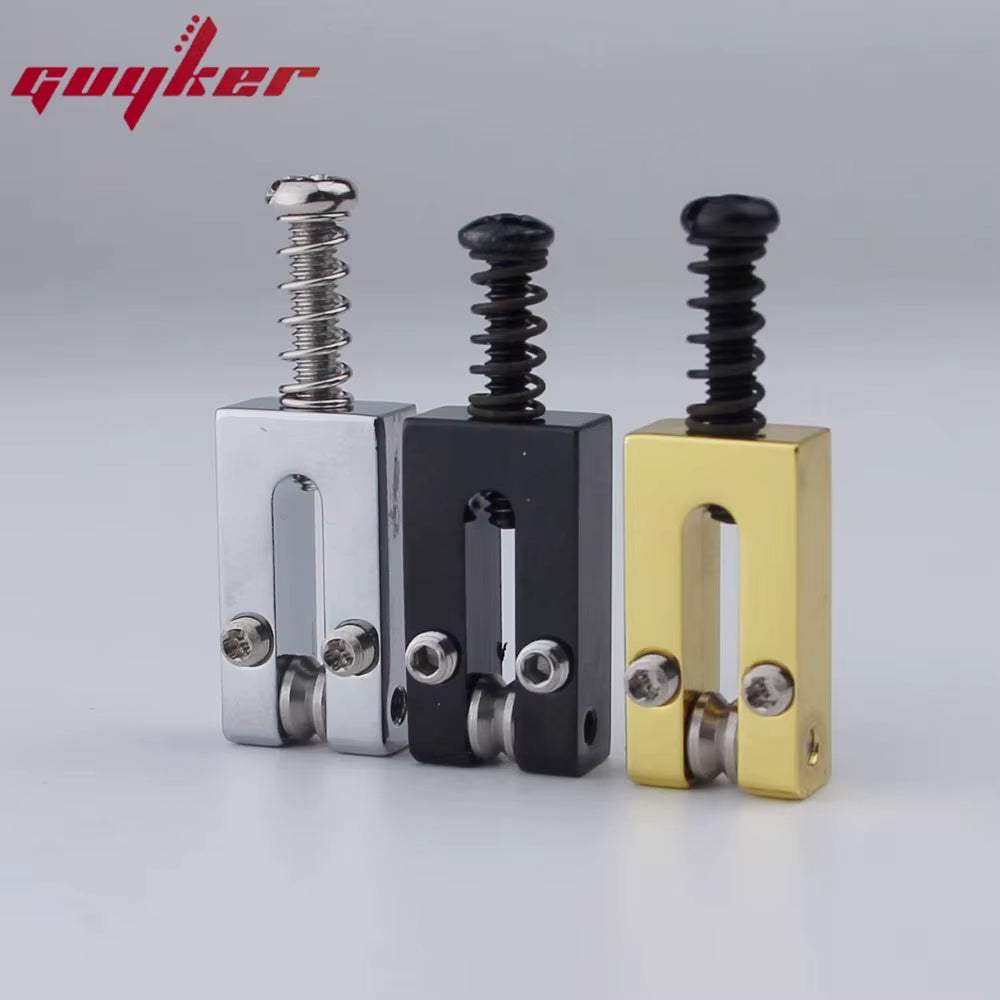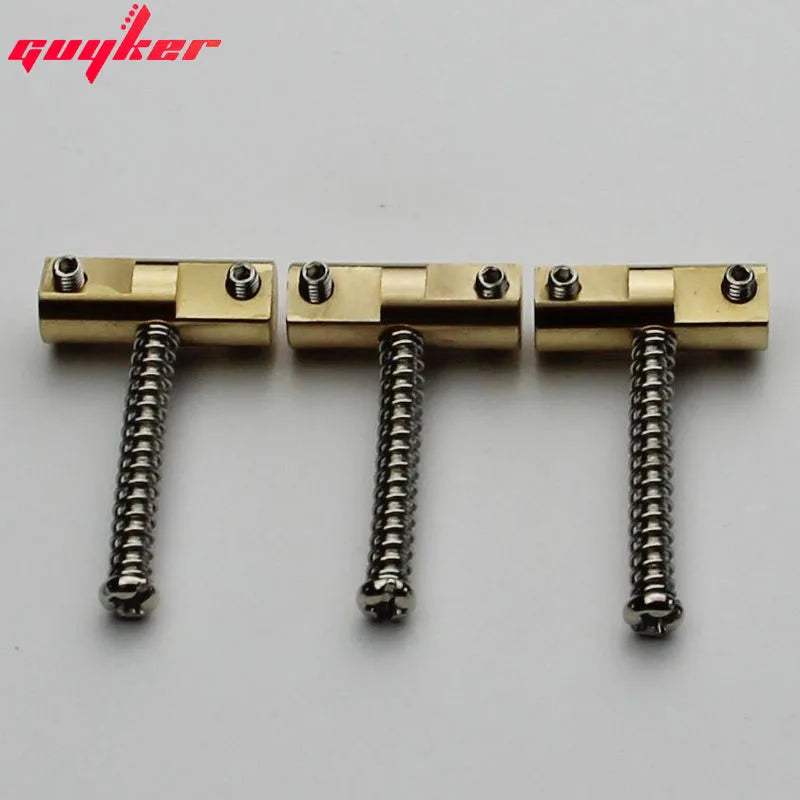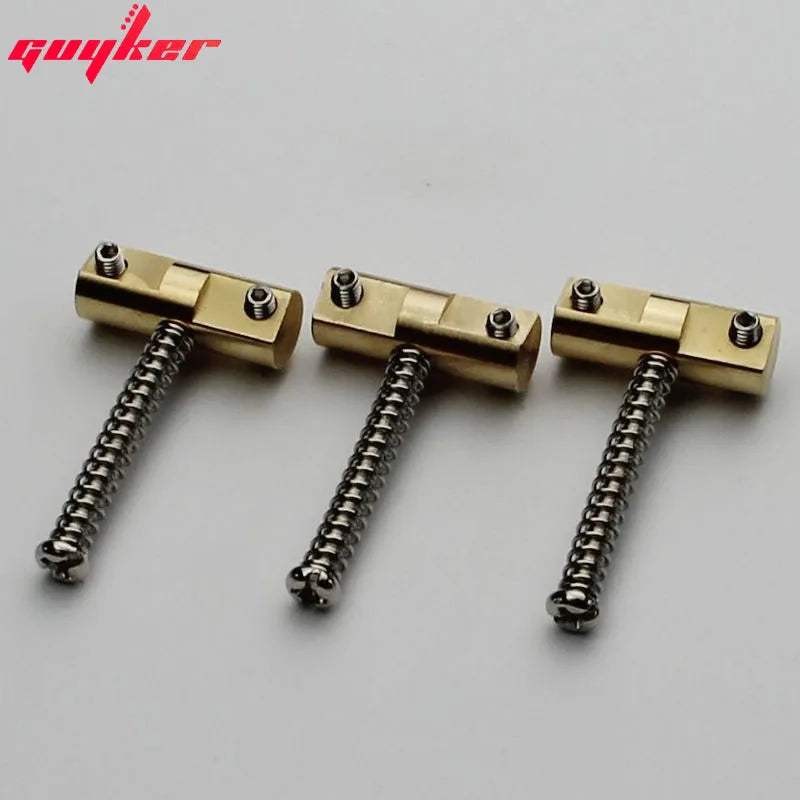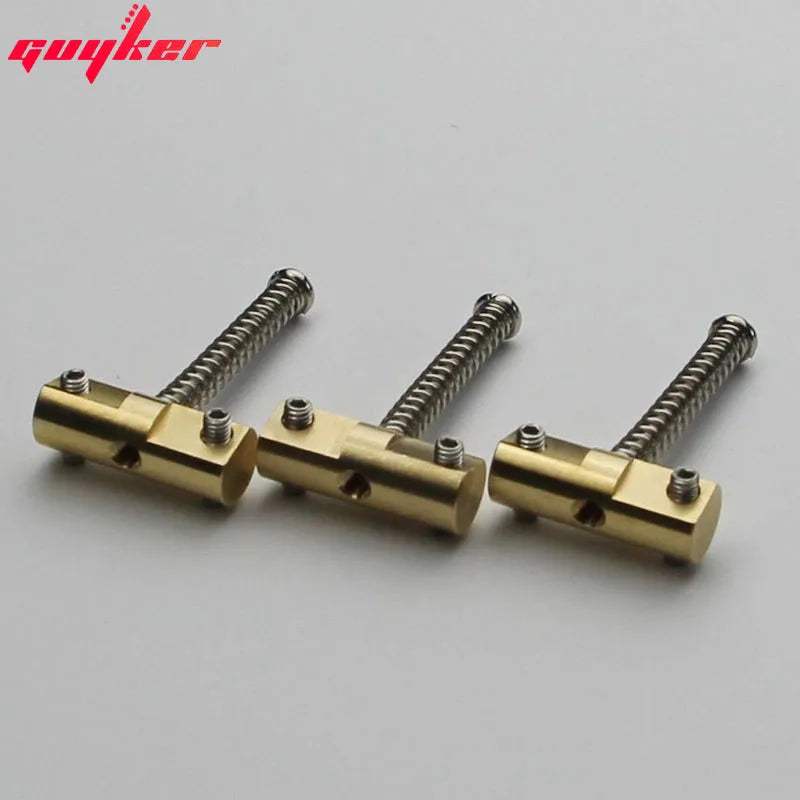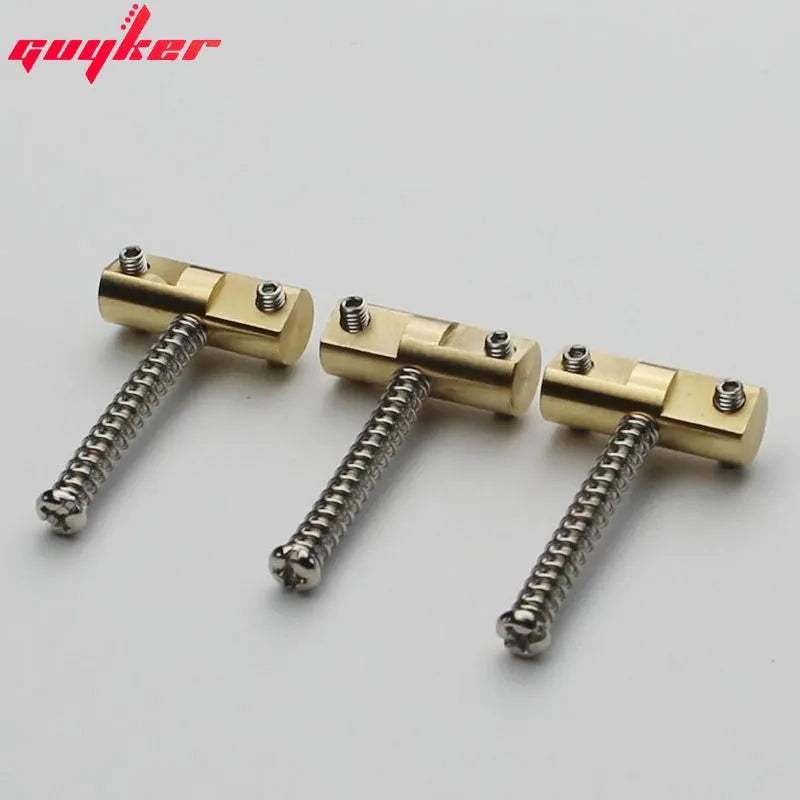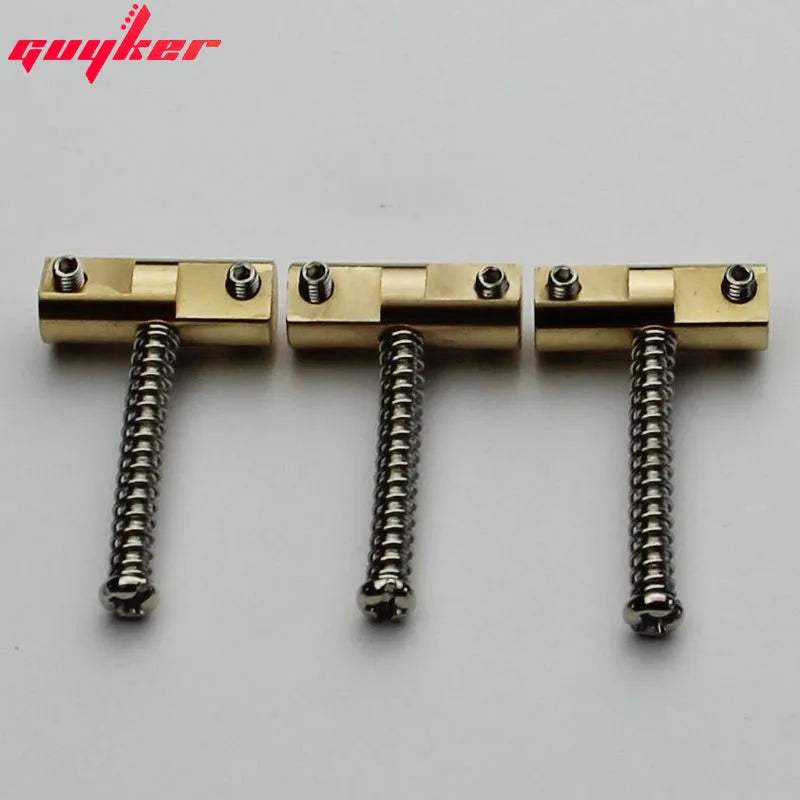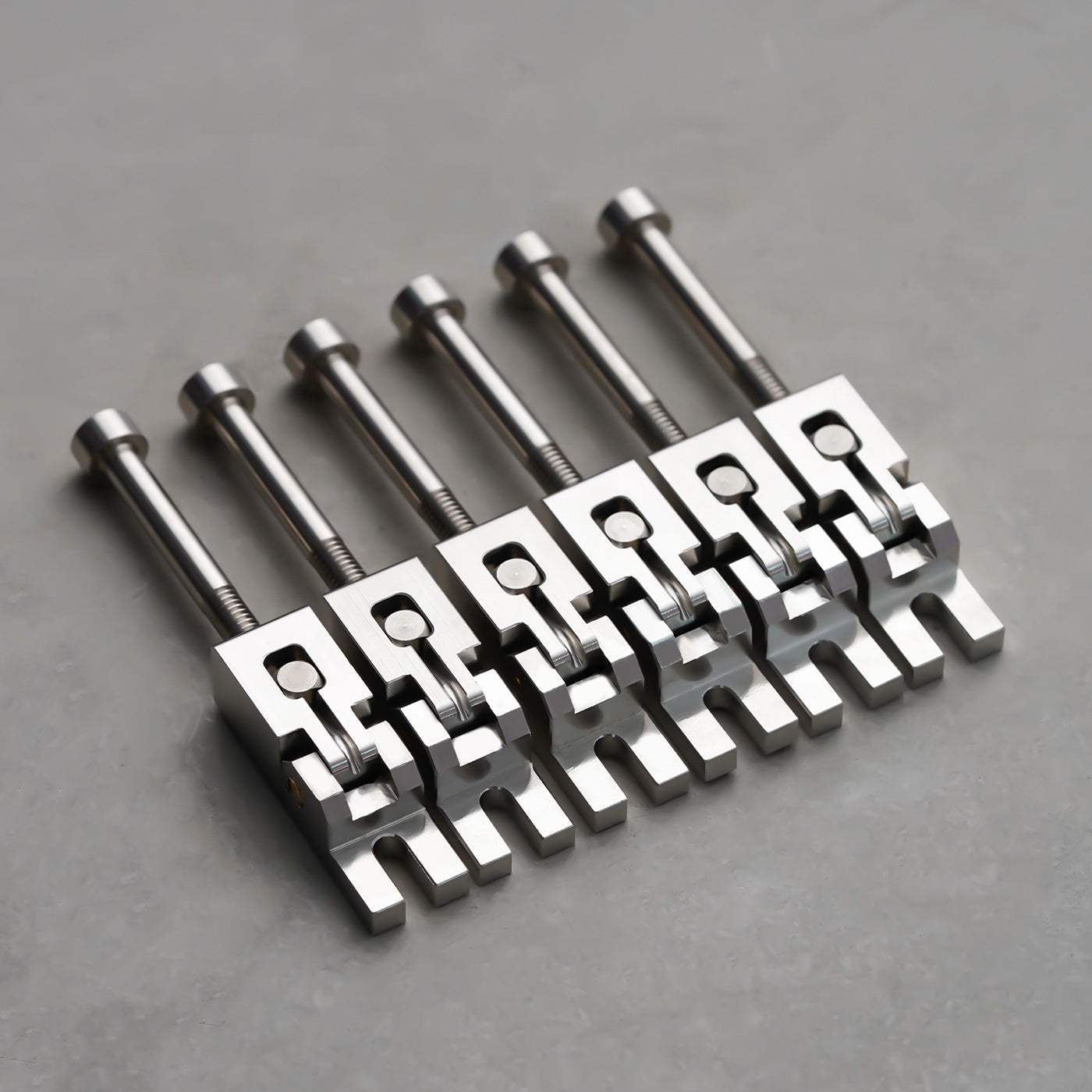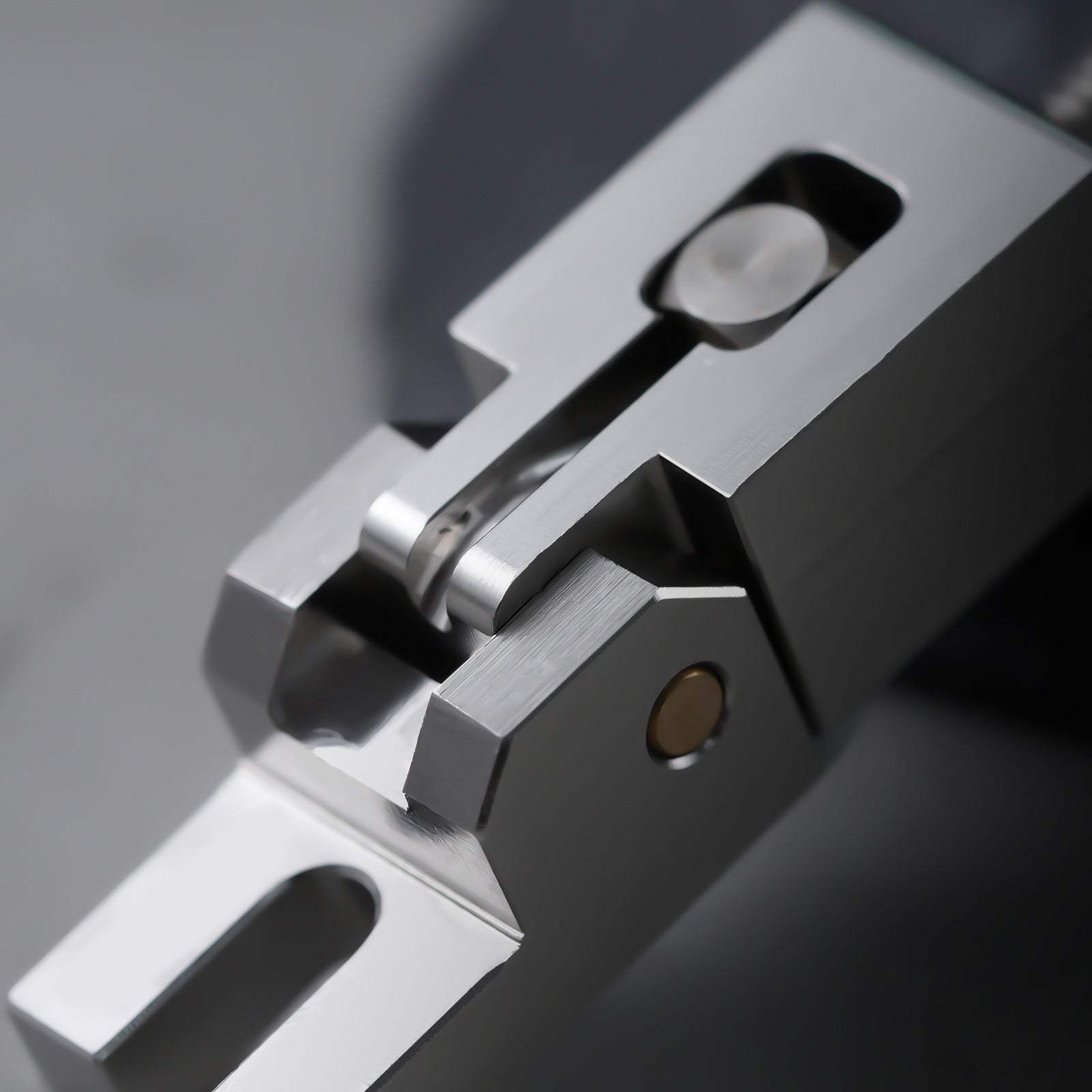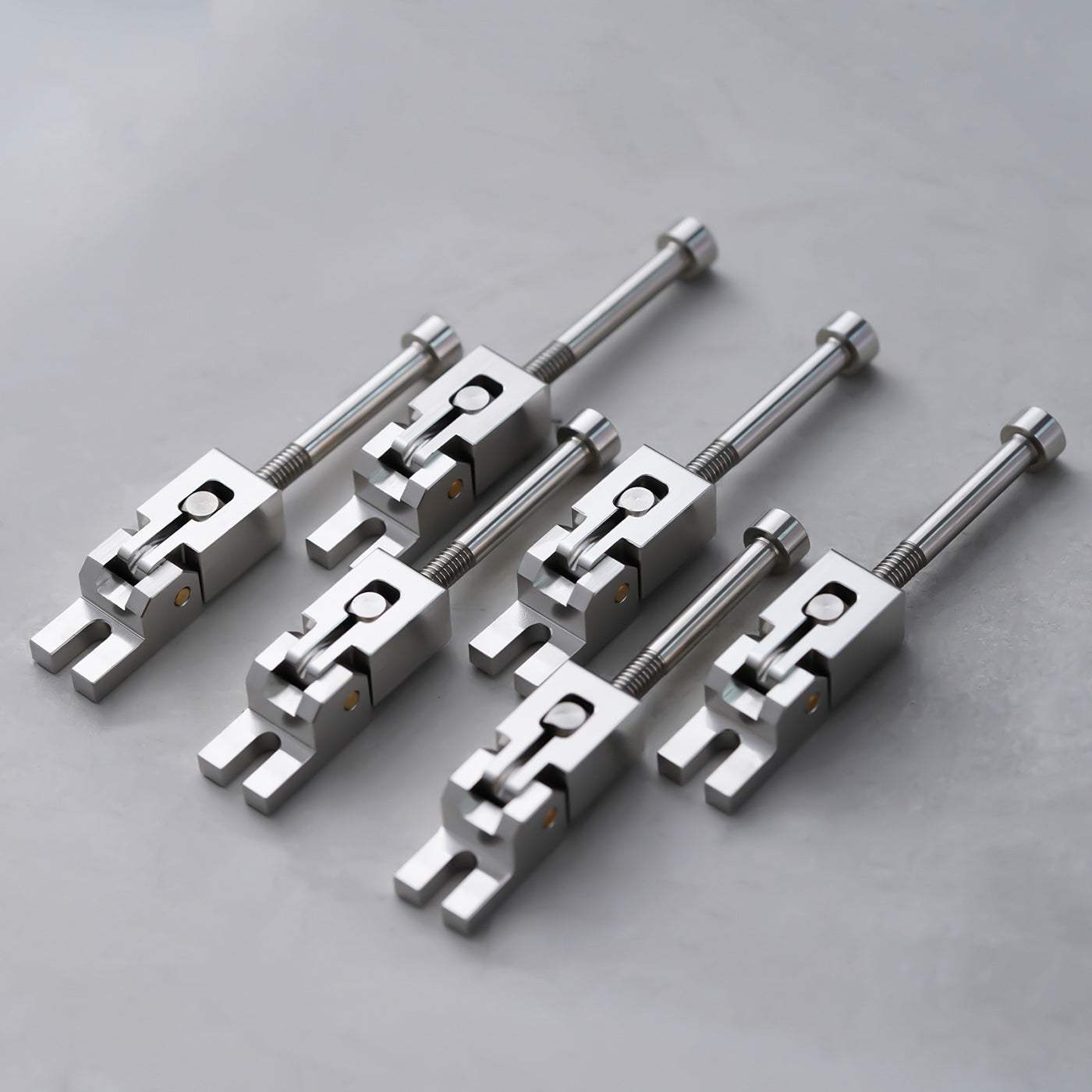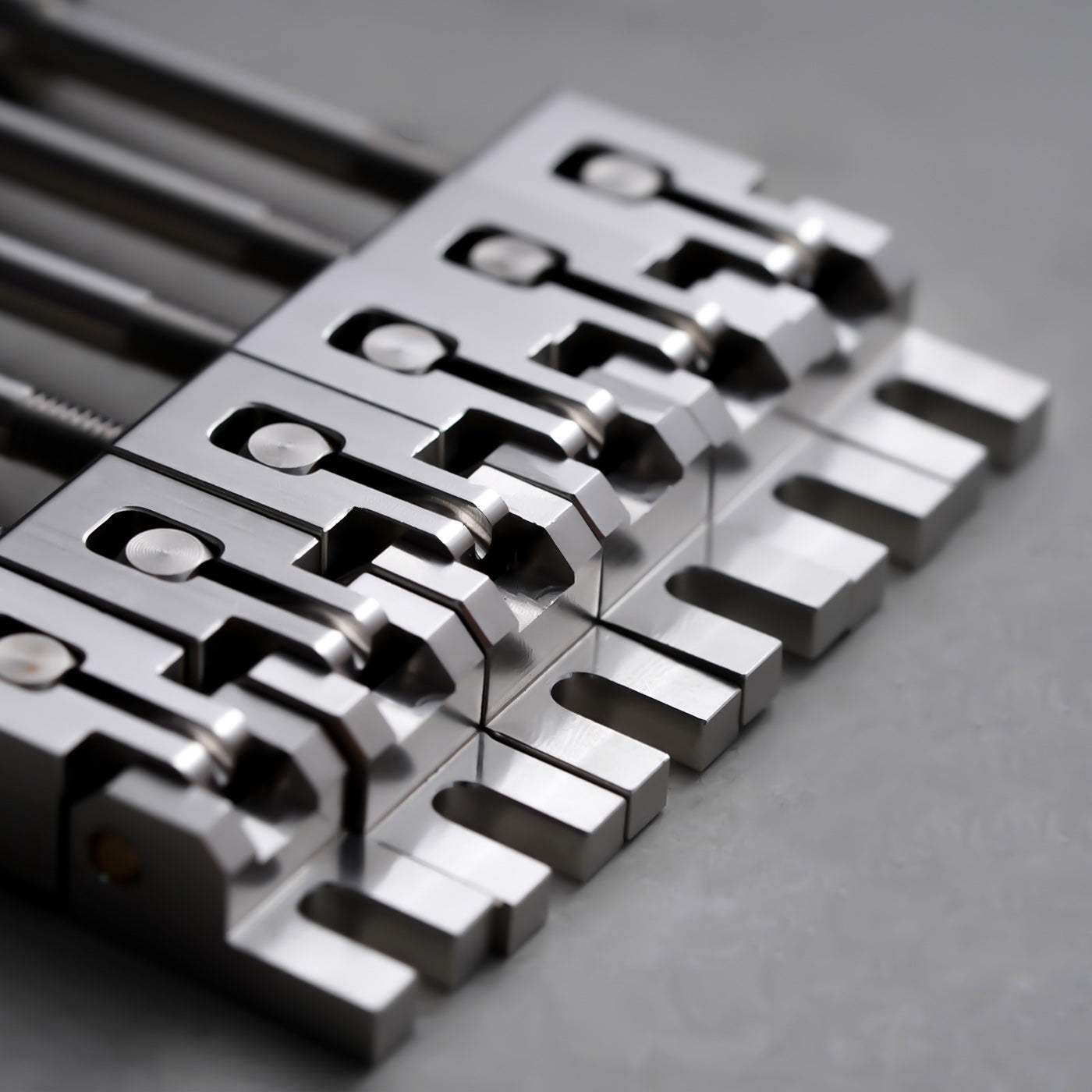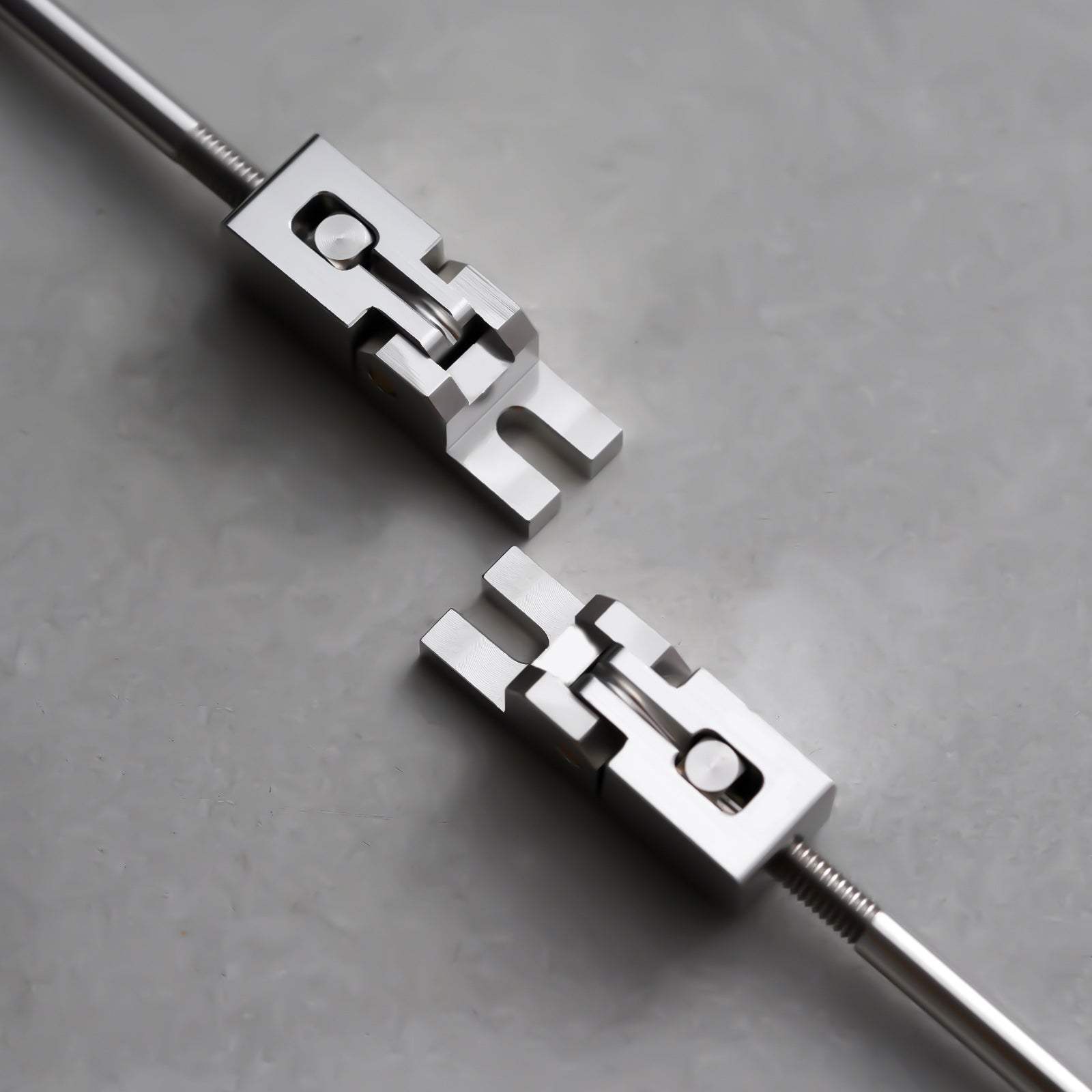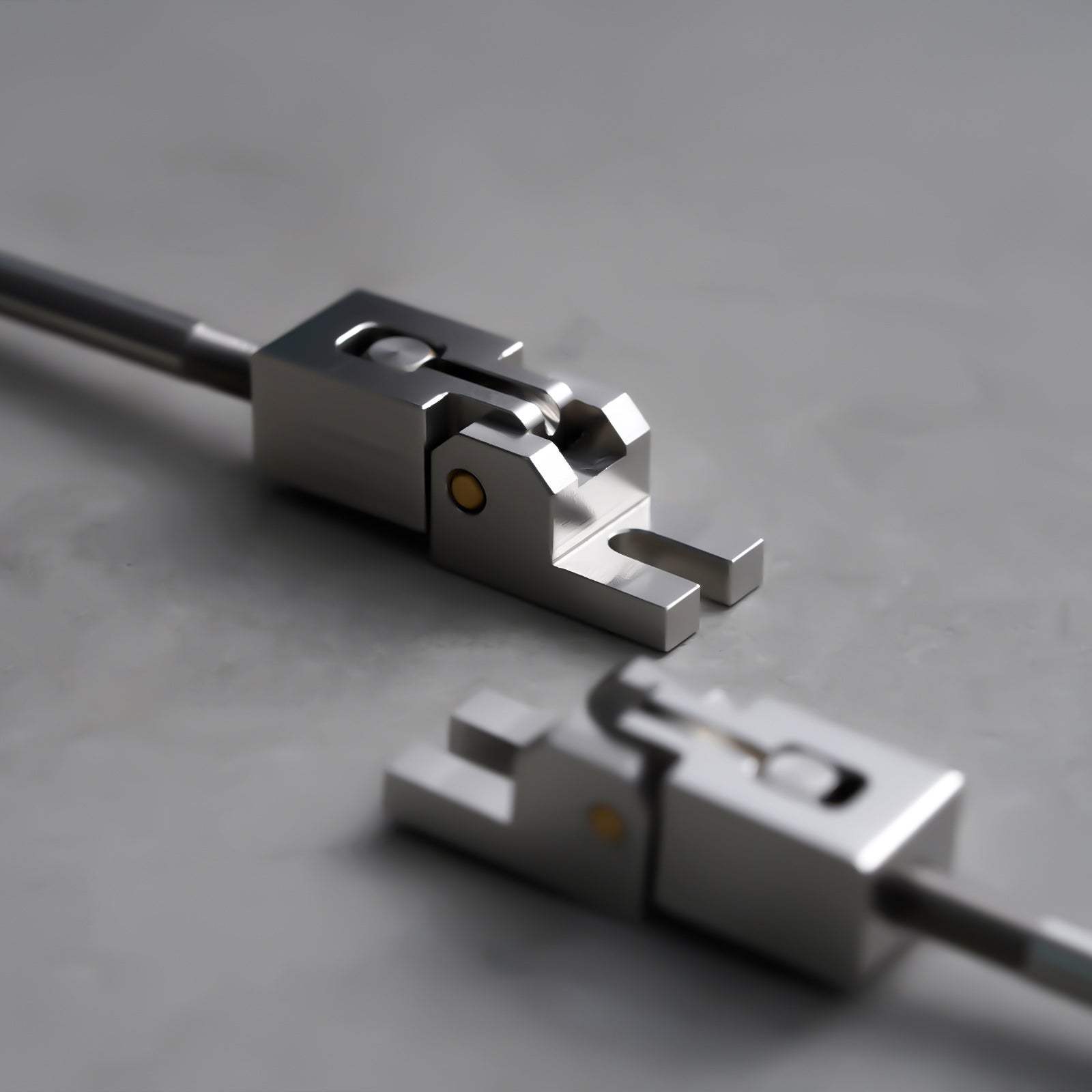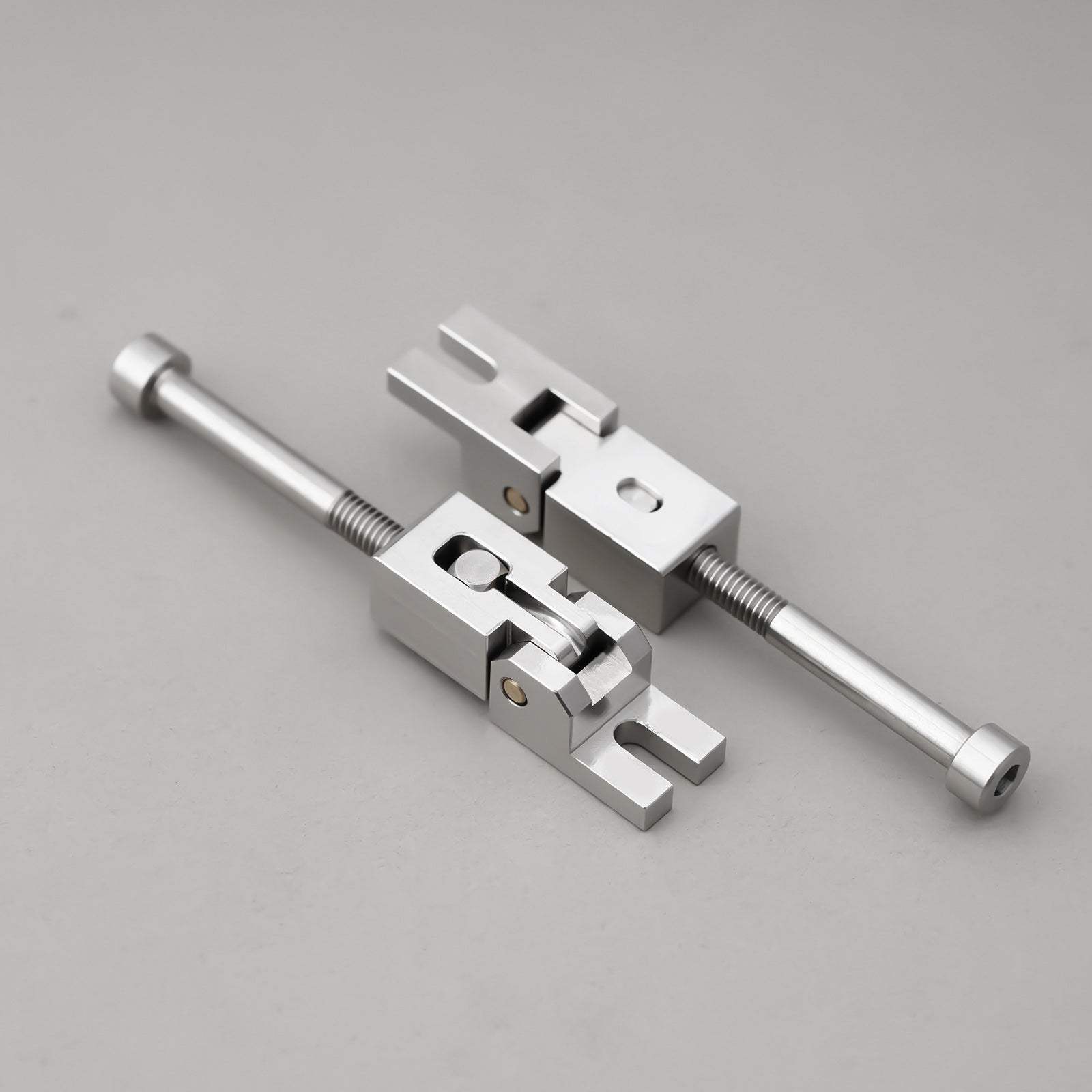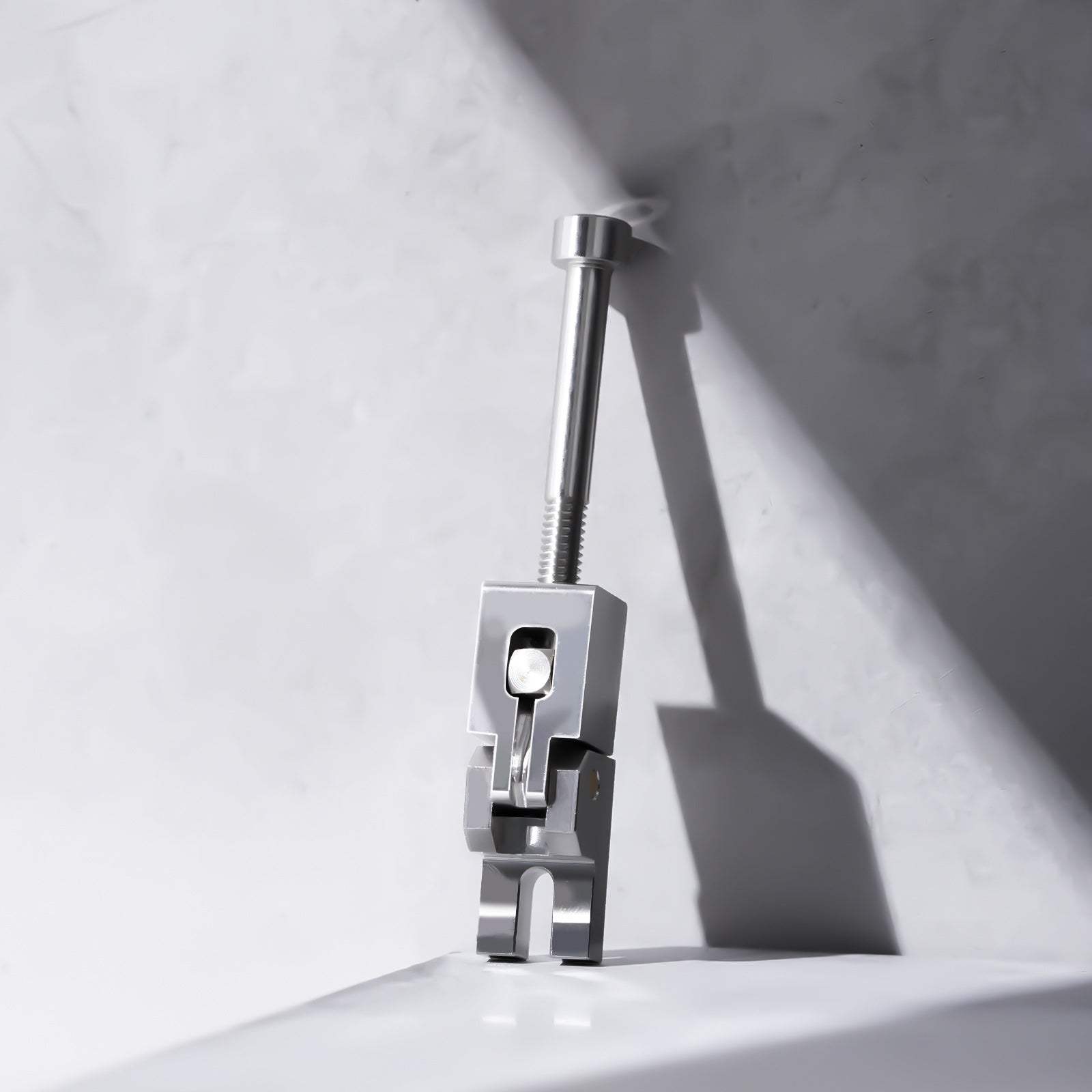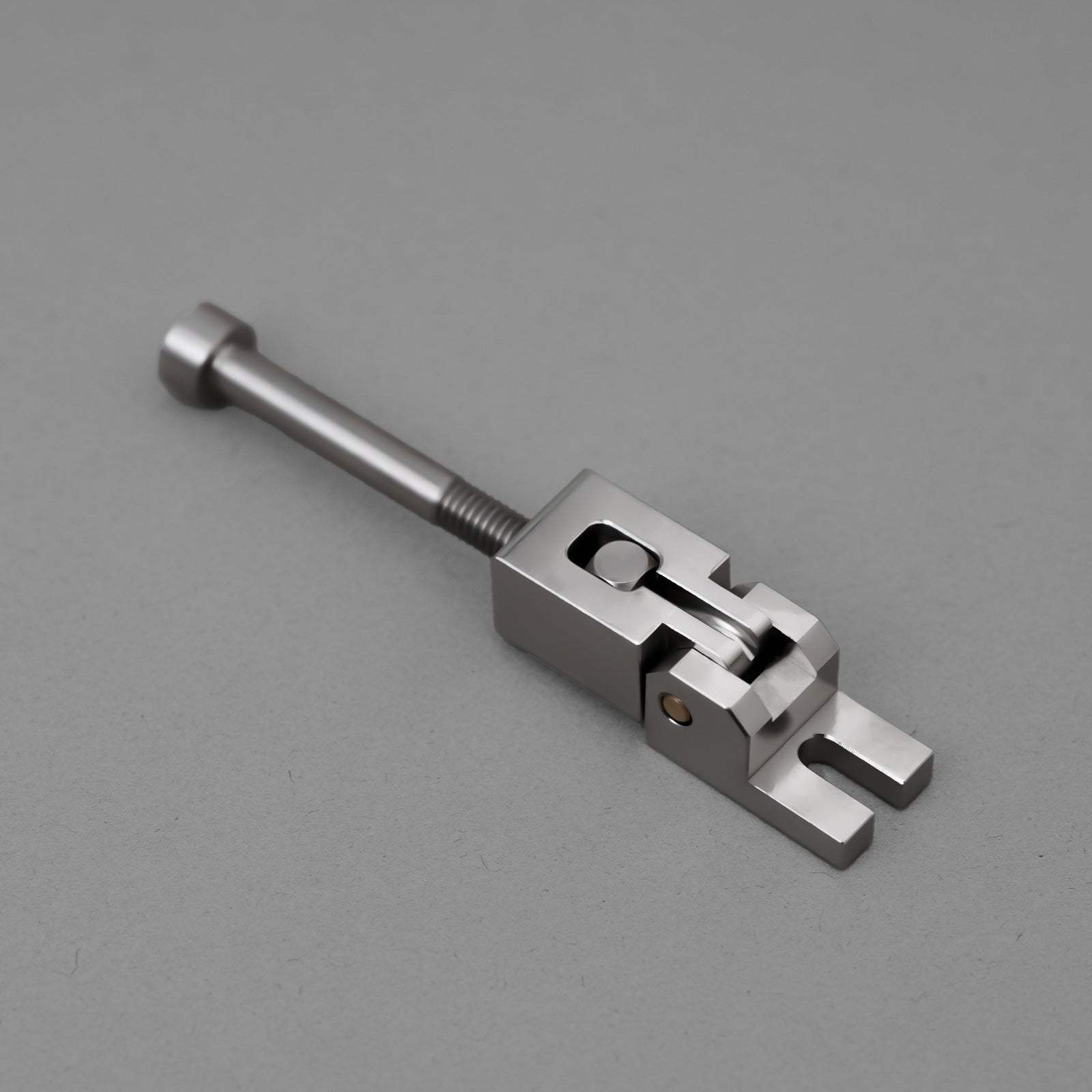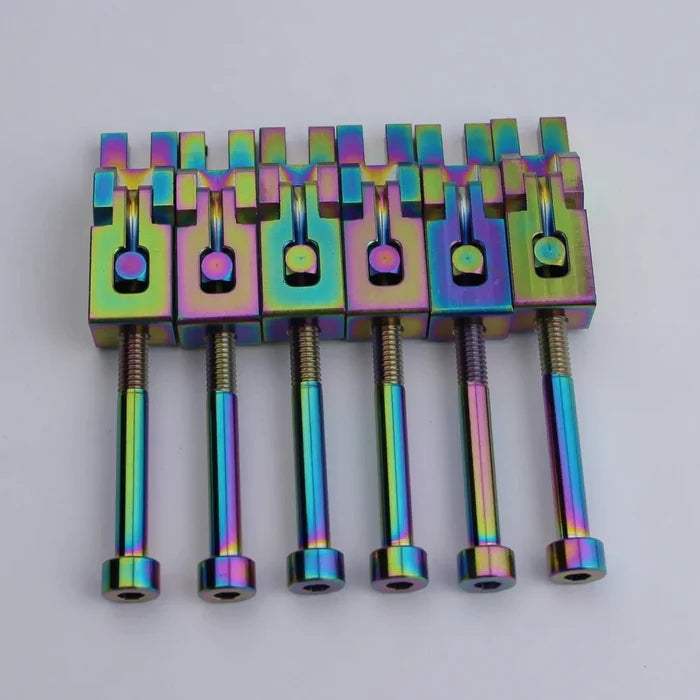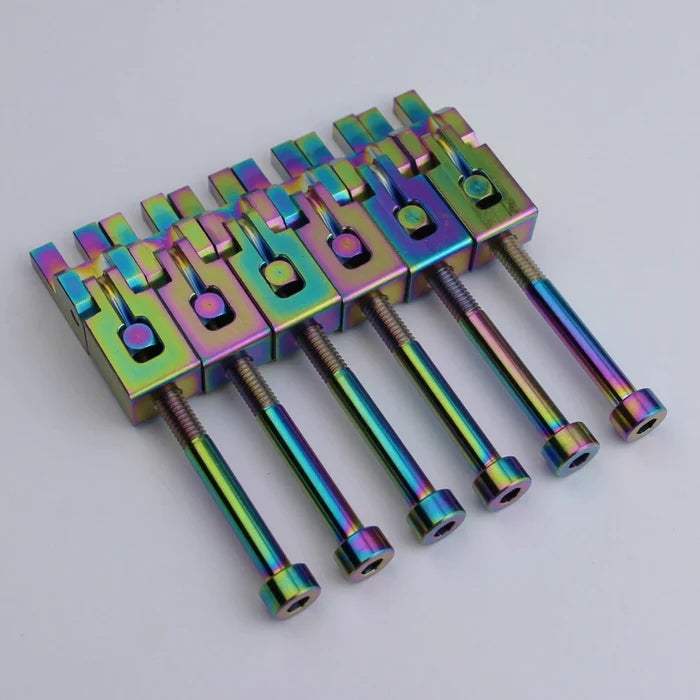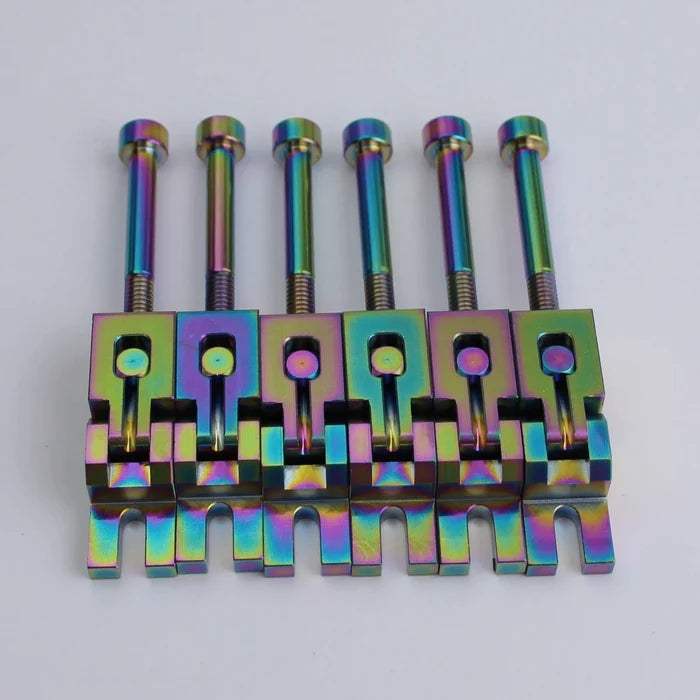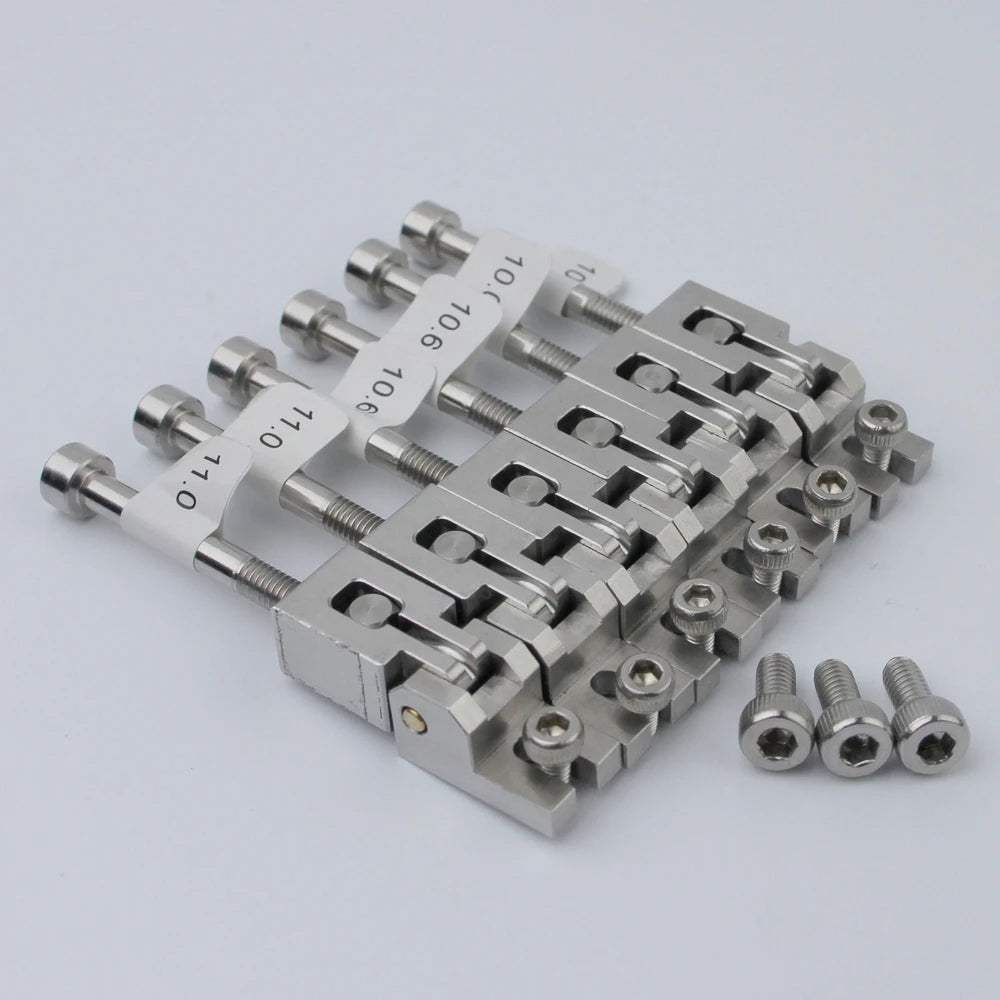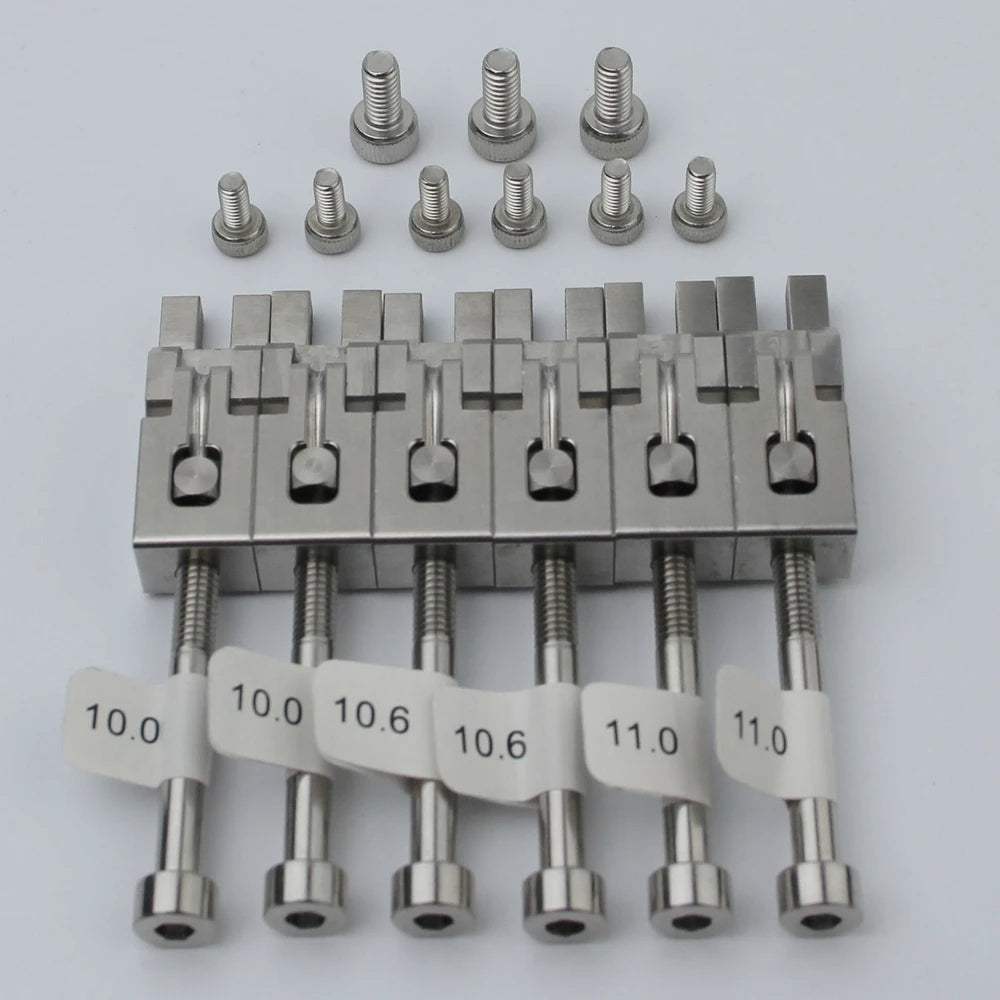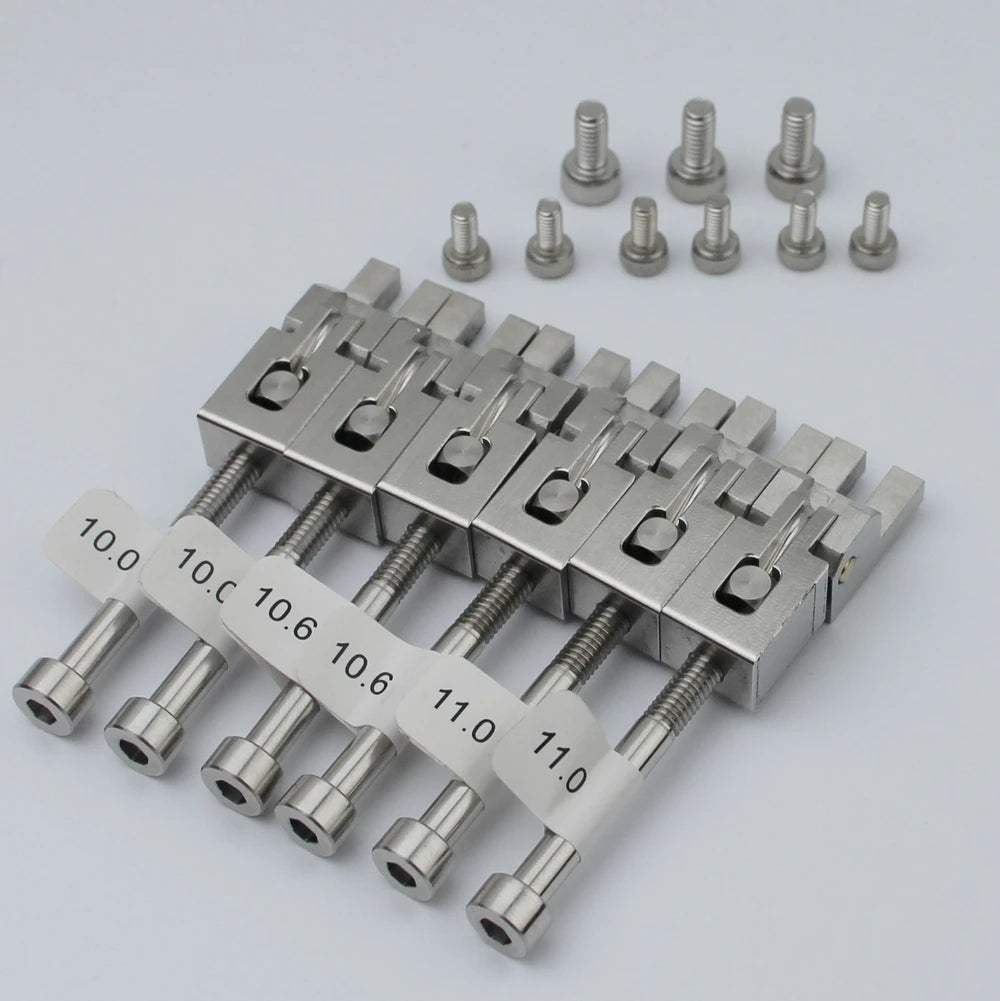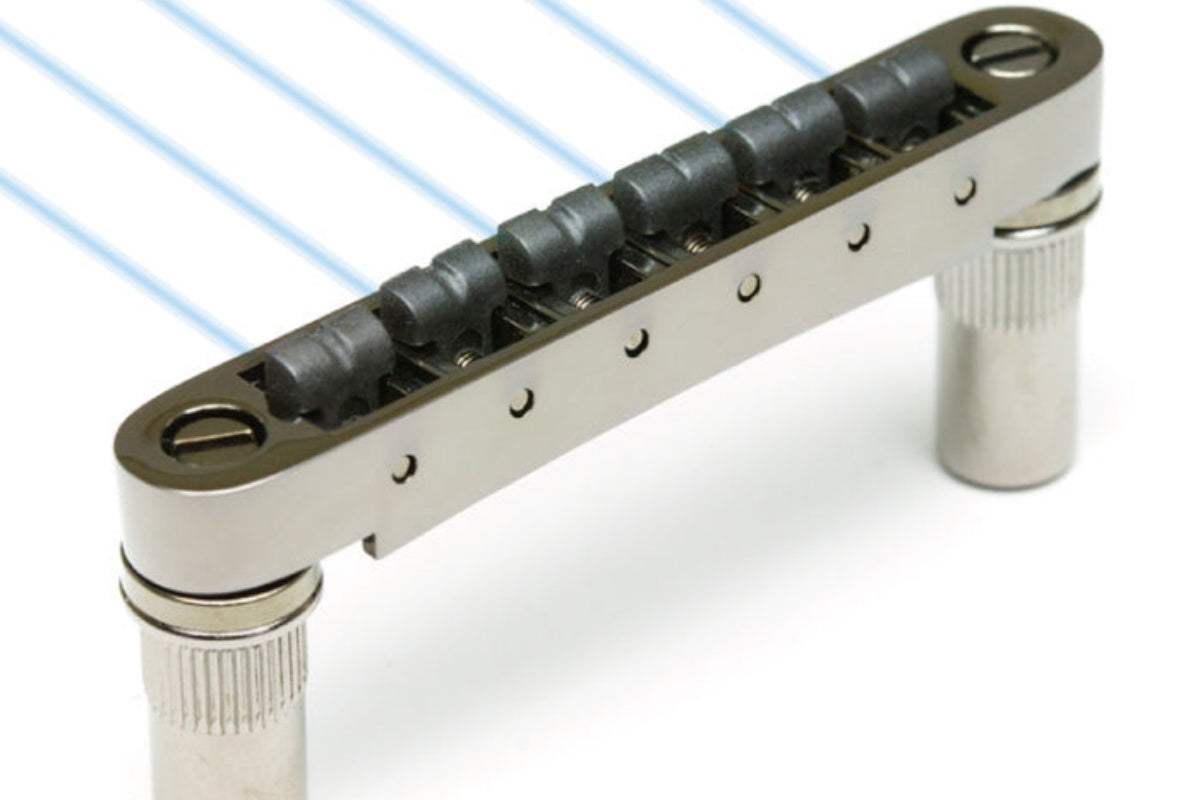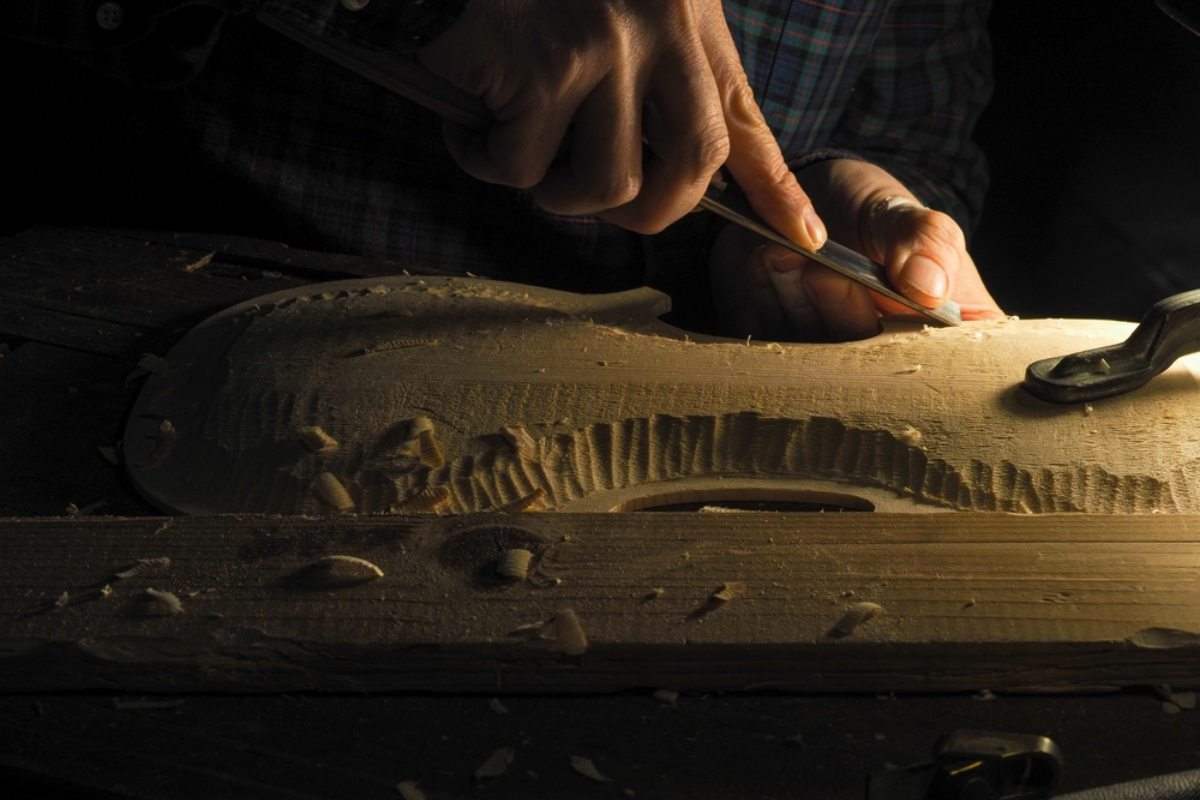In terms of size, your electric guitar saddles are one of the smallest component parts of your guitar. But size isn’t everything, and these small, insignificant pieces of metal play a critical role in both the playability and tone of your instrument.
Changing your guitar saddles is one of the easiest and cheapest ways of upgrading your guitar. And not only will it give you a better playing action and improved tone, but also more accurate intonation. So, what’s so special about guitar saddles? Let’s find out…
An electric guitar saddle is a piece of metal that's attached to the bridge of an electric guitar which holds one of the strings in place. Most guitars will have one saddle per string, i.e. 6 saddles for a six-string guitar, 7 saddles for a seven-string guitar, etc. However, some guitars, such as vintage and reissue Telecasters may have three saddles, each saddle holding a pair of strings.
Unlike electric guitars, most acoustic guitars will only have a single saddle, usually made of plastic or bone, which holds all the strings in place. They vary in design from a simple saddle which is the same all the way along its length, to more complex designs which allow for different string heights and specific notched areas that improve an acoustic guitars intonation.
The Role of an Electric Guitar Saddle
Saddles have a number of important functions, such as:
- Holding each string in place.
- Transmitting the vibrations from the strings to the bridge which then passes it to the guitar's top and the pickups.
- Setting the action. The height of each saddle determines the action, i.e. the distance between the string and the fingerboard.,.
- Setting the intonation: Adjusting the position of the saddle allows for perfect intonation, i.e. notes will be perfectly in tune regardless of where you play them on the fretboard.
Saddle Materials
Acoustic guitar saddles are usually made from bone, plastic, or occasionally a metal, such as brass. Bone is considered to be the best option tonally and is used on most mid-priced and premium acoustic guitars.
Installing a brass saddle to an acoustic was quite common in the past (especially the 1960s/1970s) to increase the brightness of an acoustic guitarguitars tone. You will still find them on many vintage instruments, however, these days, the majority of saddles are bone or plastic.
Electric guitar saddles are always metal, usually made of stainless steel, brass, or coated brass.
Adjusting Electric Guitar Saddles
Setting the action and intonation on your guitar correctly are the most important factors in making sure that it sounds and plays as nicely as possible.
The action is the distance between the strings and the fingerboard. If the strings are too far from the fretboard, they will be hard to fret; if they’re too low, then they might buzz or not sound at all. Therefore, you need to get each string in the sweet spot so that they are easy to play with no fret buzz, to do this you adjust the saddles.
To adjust the action, you raise or lower each saddle, usually by turning one or more hex screwsscrew with a hex wrench. Turn clockwise to raise the saddle,; or counter-clockwise to lower the saddle. If your saddles have two hex screws, then adjust them equally ensuring that the saddle remains level.
As mentioned, the saddles are also used to adjust the intonation of your guitar. Perfect intonation is where every note you play on the instrument is in tune regardless of where you play it. For example, the A note on the twelfth fret of the A string should be exactly the same pitch as the open A string but an octave higher. If it isn’t, you need to adjust the intonation by moving the bridge backward or forward a little. So, let’s find out how to do it…
Setting a Guitars Intonation
Sticking with the A string, if the note on the twelfth fret is slightly higher than an octave, the string is fretting sharp; whereas, if the note on the twelfth fret is slightly lower than an octave, it is fretting flat.
To get a string perfectly intonated, move the saddle away from the nut if the note on the twelfth fret is sharp and closer to the nut if the note is flat.
How you do this will vary depending on what guitar you play, for example, on most Fender guitarsguitar (such as strats and teles), there is a screw at the back of the bridge which determines the front-to-back position of the saddle. Simply turn it and you will either see it move forward or backwardbackwards. Then make the adjustments as detailed above, or follow the following instructions:
- To correct a note that is sharp at the twelfth fret, turn the screw clockwise using a Phillips or flat-head screwdriver (depending on the type of screw) to pull the saddle backwards towards the bridge.
- However, if the note on the twelfth fret is flat, turn the screw counter-clockwise moving the saddle towards the nut.
- Continue making adjustments until the note on the twelfth fret is exactly the same as the open string. Once the process is complete, move to the next string and repeat. Once you have finished all six strings, check every string once again, because there may be a need for minor adjustments.
For more information, check out the Beginners Guide to Intonation.
Highly Recommended Saddles
If you’re looking to upgrade the performance of your Les Paul, Strat, or Tele, you’re going to need a high-quality replacement guitar saddle. All of Guyker’s saddles are crafted from premium materials and specifically designed to improve sustain, intonation, and overall tone. The range covers everything from vintage-style brass saddles to modern high-tech titanium saddles, so you’re guaranteed to get the right option for your guitar.
Here are a few of my personal favorites:
Guyker Brass Bridge Saddles For Fender Strat & Tele Electric Guitar
Guyker Bridge Saddles (3 Pcs) Wilkinson Guitar Bridge 10.8mm Brass Compensated Saddles
Guyker FR-SUS6ps Steel Bridge Saddles - Compatible with Floyd Rose Tremolo System
Wrapping it Up!
There you have it, everything you could possibly want to know about electric guitar saddles in a nutshell! Please don’t take the saddles on your guitar for granted, give them the love they deserve and they will reward you with an instrument that feels, plays, and sounds superb.
If you like this article, please share it!
Be sure to join our FB Group Guyker Guitar Parts VIP Group to share your ideas! You can also have connections with like-minded guitar players, Guyker updates as well as discounts information from our FB Group.



